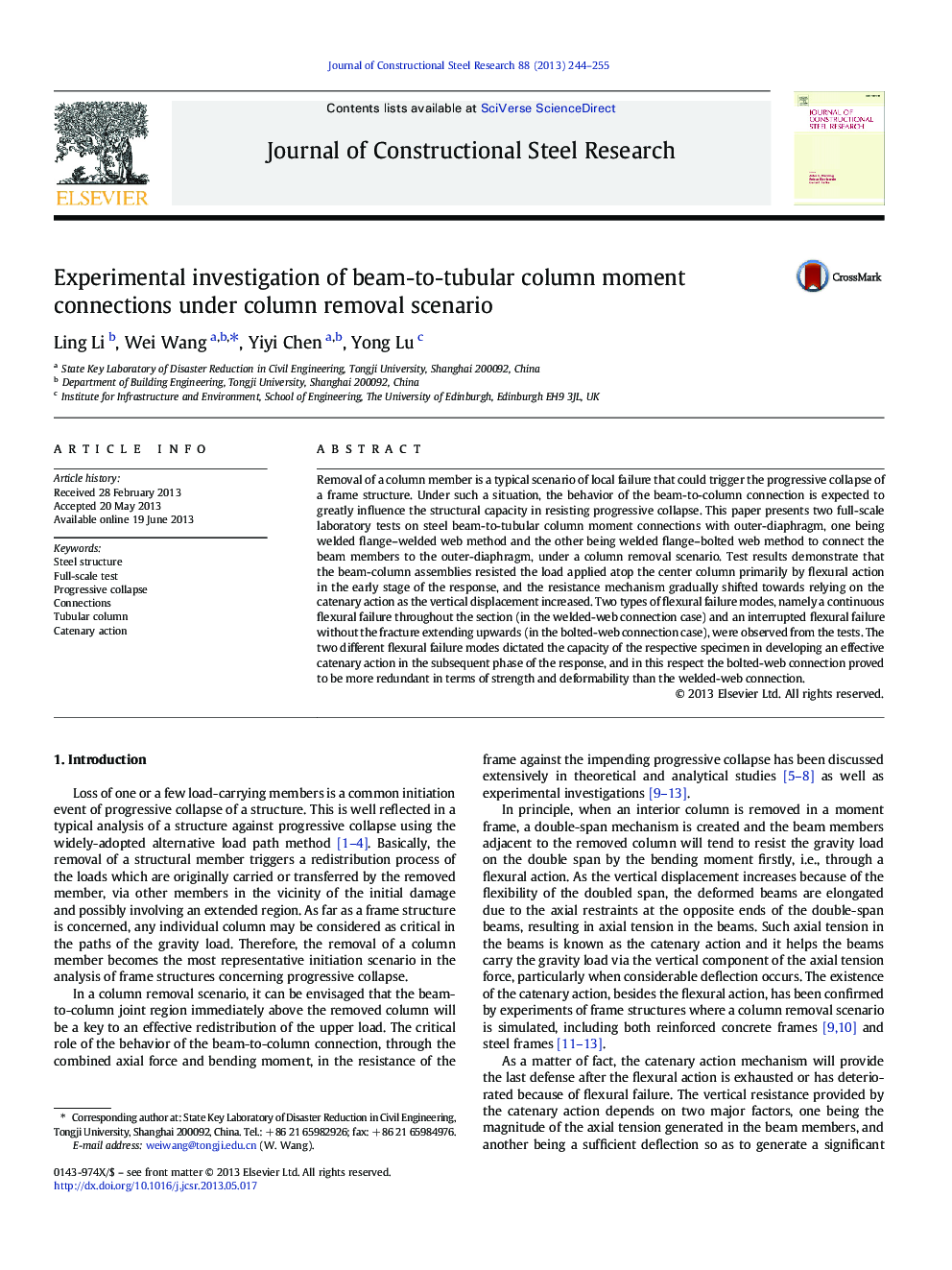| کد مقاله | کد نشریه | سال انتشار | مقاله انگلیسی | نسخه تمام متن |
|---|---|---|---|---|
| 284907 | 509170 | 2013 | 12 صفحه PDF | دانلود رایگان |

• Steel beam-to-column moment connections were tested under a column removal scenario.
• Two flexural failure modes were observed depending on the connection methods.
• Welded web connection couldn't develop catenary action with a continuous failure.
• Bolted web connection developed catenary action with an interrupted failure.
• Bolted web connections performed more redundant than the welded web connection.
Removal of a column member is a typical scenario of local failure that could trigger the progressive collapse of a frame structure. Under such a situation, the behavior of the beam-to-column connection is expected to greatly influence the structural capacity in resisting progressive collapse. This paper presents two full-scale laboratory tests on steel beam-to-tubular column moment connections with outer-diaphragm, one being welded flange–welded web method and the other being welded flange–bolted web method to connect the beam members to the outer-diaphragm, under a column removal scenario. Test results demonstrate that the beam-column assemblies resisted the load applied atop the center column primarily by flexural action in the early stage of the response, and the resistance mechanism gradually shifted towards relying on the catenary action as the vertical displacement increased. Two types of flexural failure modes, namely a continuous flexural failure throughout the section (in the welded-web connection case) and an interrupted flexural failure without the fracture extending upwards (in the bolted-web connection case), were observed from the tests. The two different flexural failure modes dictated the capacity of the respective specimen in developing an effective catenary action in the subsequent phase of the response, and in this respect the bolted-web connection proved to be more redundant in terms of strength and deformability than the welded-web connection.
Journal: Journal of Constructional Steel Research - Volume 88, September 2013, Pages 244–255